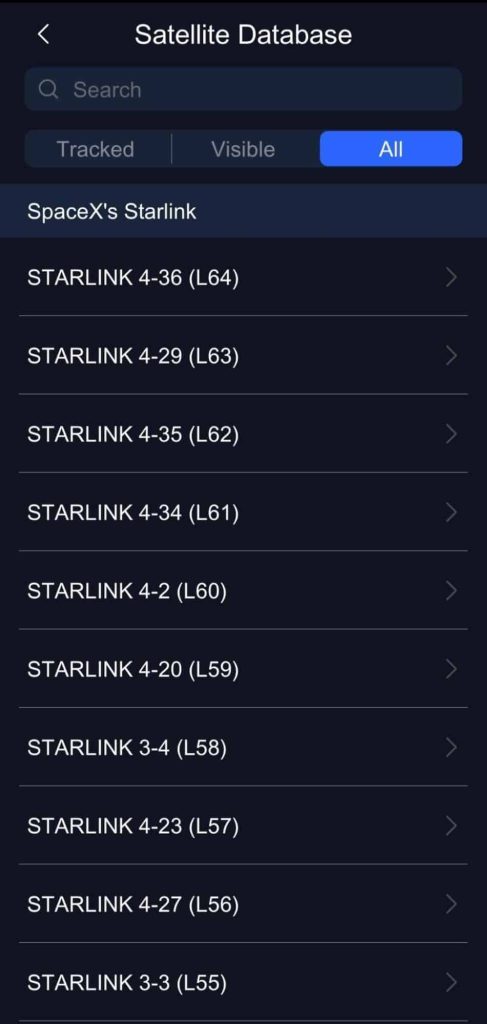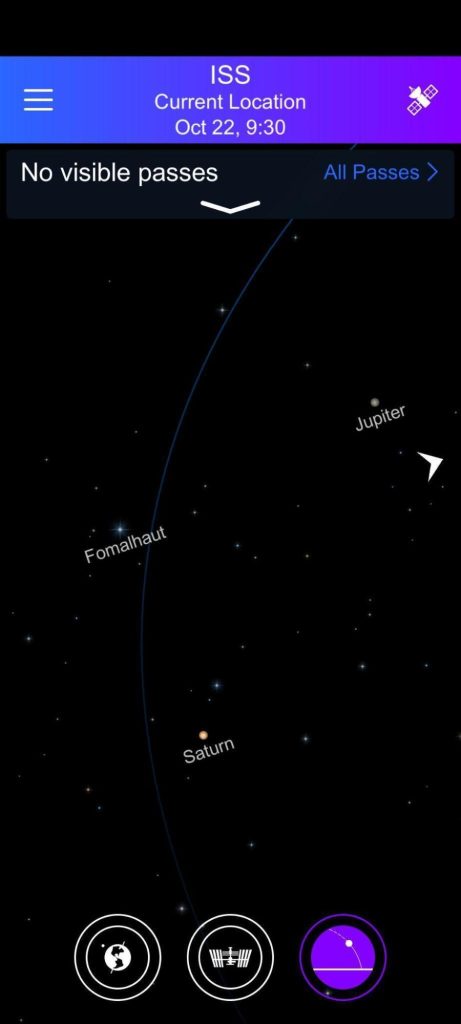With Elon Musk’s goal of launching 42,000 Starlink satellites into space for better satellite internet, you can expect to see more trains in the sky. The tech genius cum entrepreneur is already past the 3,000 mark and owns most of the satellites in orbit today.
So, if you are an interested skywatcher, you must be familiar with the Starlink satellites. Most people cite the string of satellites as a chain of bright dots speeding across the sky. This article will help you identify and enjoy watching the Starlink satellites if you have not seen them.
So, how can you see Starlink satellites from the earth, and how can you differentiate them from other space crafts?
Keep reading to find out.
Contents
About Starlink Satellites
Are you hearing of Starlink satellites today for the first time? Well, you are not alone. When you finish reading this article, you can tell even the number of Starlink satellites in space and how to identify them when you watch the sky.
Starlink satellites are telecommunication satellites built and owned by Space X, Elon Musk’s company. The satellite is built to provide better internet connectivity to even the most remote areas. This satellite internet is reportedly 47% faster than fiber optics, making it an affordable and better alternative for people living in remote areas.
Starlink offers high-speed internet services, anticipated to transmit up to 1 gigabit per second. And with the steady increase of successful satellites launched into space, the goal of having global connectivity is about to be realized.
How many Starlink satellites are in space?
Space X plans to provide satellite internet across the globe by using 42,000 satellites. By 2026, the company also aims to have sent 12,000 space crafts into orbit. In this regard, there have been about 185 launches into space, with each consignment carrying 51-53 satellites in the past months.
Today, space has over 3400 Starlink satellites, which is expected to grow with time. Elon hopes to create a mega constellation, and by the time he does, he will have the single largest share of satellites orbiting the earth.
The mega constellation dream started with 60 pilot satellites launched into space in 2019. 3 years later, the number of Starlink satellites in orbit has grown to over 3,400.
As mentioned before, Space X launched the Starlink satellites into space in batches.
Where are Starlink satellites in space?
Starlink satellites are a satellite internet constellation. They use the low earth orbit to provide broadband internet access to rural and geographically challenging areas.
Usually, these satellites orbit the earth using the low orbit, located about 550km or 340 miles above sea level. At this height, they can be pulled back into the earth’s atmosphere by the atmospheric drag when they burn out. As a result, they will be less likely to contribute to space junk.
How to see Starlink satellites night sky?
Although there is contrasting reception to the launch of so many satellites into space, it is undeniable that Starlink satellites offer a spectacular sight at night. These dot-like trains of bright spots in the night sky are easily visible to the naked eye. You only need to know when and where to look.
So, how do you know where the Starlink satellites are at any point?
There are multiple platforms you can use to find any satellite in space. Some include:
1. Satellite Tracker
Satellite tracker is a powerful app that helps you locate artificial satellites in space. The free application lets you know the exact position of any satellite launched into space. Also, you can receive notifications of when the satellites will be passing over your head. So, if you are interested in viewing the Starlink satellites, you can download the Satellite Tracker app for Android or Satellite Tracker for iOS.
How to use the Satellite Tracker
The first step towards observing night sky satellites is downloading the app. Once you have it on your device.
- Tap on the satellite icon on the screen and tap “All”.
- Locate Space X’s Starlink satellite section.
- Choose a mission you are interested in, indicated by the letter L for Launch.
- Tap the “Track” button next to the mission to add the satellite batch to your tracking list, The satellites are then added to your tracking list in order of their appearance in the sky above you.



- Tap one of the satellites you have added to your tracking list and select it before returning to the main screen
- On the main screen, select the ‘Next Pass” timer to know how long you have until the selected satellite passes over your location.
On the Satellite Tracker app, you can also view the list of satellite passes that will be visible from your location shortly. Using the “All Passes” list on the top of the main screen, you can view all satellites set to pass over your head, their observation time, date, and the period they will be visible.
On the main screen, you can alternate viewing modes between a global view, a satellite view, or a sky view.
- Global view – allows you to see the satellite’s trajectory around the earth in 3D,
- Satellite view – shows a 3D model of a satellite’s position in space
- Sky view – shows you where the satellite is in the sky



2. Find Starlink
As more people report seeing Starlink satellites in the sky, a Space X fan created a website to see and track Starlink satellites in space. The Find Starlink website gives you a good idea of where the Starlink satellites are in space and an approximate time of when they will be visible in your location.
The website includes a wide range of countries and thousands of cities worldwide.
To use the website to view Starlink satellites:
1. Log into the website, and select your location by filling in your country and place.

2. Click the ‘Find Visible Times’ button.
3. A list of dates and times when the satellites will be visible in your area will appear on the screen. You get a list of good, average, and poor visibility sightings.

4. You can also select specific coordinates to search for a Starlink satellite sighting.
5. Alternatively, you can check the satellite “Live Map” to explore Starlink Satellites in space.
You can also track the Starlink satellites and know when they will be passing over your location using other platforms such as:
- The Live Starlink Satellite and Coverage map by Satellite Map
- Heavens-Above is another platform where you can predict the next Starlink satellite pass in your location. You select the mission you want, set the dates and get the details of the satellites passing.
- CelesTrak is another platform to make your orbit visualization of the Starlink satellites possible.
- You can also use N2YO.com to see the position and trajectory of Starlink satellites.
What do Starlink satellites look like in the night sky?
You may not see Starlink satellites during the day, but if you are a skywatcher, you will notice them sometime in the sky. After the rocket’s launch from either Kennedy Space Force or the Cape Canaveral Space Force Station in Florida, the carrier vessel travels upwards into space.
Once launched, you can see the Starlink satellites as a line of lights that appear as a train in the sky. Usually, the line is visible for one or two days after the launch. So, every time you see a dot in the sky, that is a Starlink satellite reflecting light from the sun.
These dots then travel upwards from the earth until they settle into their future orbit. Usually, at these levels, about 340 miles from the earth’s surface, the satellites are too far for humans to view with their naked eyes.
However, if you are an astronomer or just enjoying watching the sky, and you have a telescope at home, then you can point it to the sky and enjoy watching Starlink satellites after they settle in their orbits.
You are probably wondering how you identify a Starlink satellite.
Identifying a Starlink satellite in space
Without diving deeper into their structures or functions, you may not tell the difference between an ISS satellite from a Starlink satellite in space. However, it is easy to identify a Starlink satellite if you watch the launch.
As mentioned, it isn’t easy to see these satellites once they settle in orbit. However, during the launch, you will begin by seeing a huge glowing plume in the sky, usually created by the rocket carrying the satellites.
Once released, the satellites form a train of lights in the sky. This is usually so because the space crafts follow each other relatively closely as they edge closer to their final resting place.
Conclusion
The next time you see a string of bright lights in the sky, do not panic. It will probably be another one of Elon’s Starlink satellites being launched into space. To enjoy view, you can keep up with Space X’s launch calendar and enjoy the view. And if you miss the launch, you can always track the satellite’s position over your location, and using a visual aid, watch as the satellites travel over the earth in the low earth orbit.
